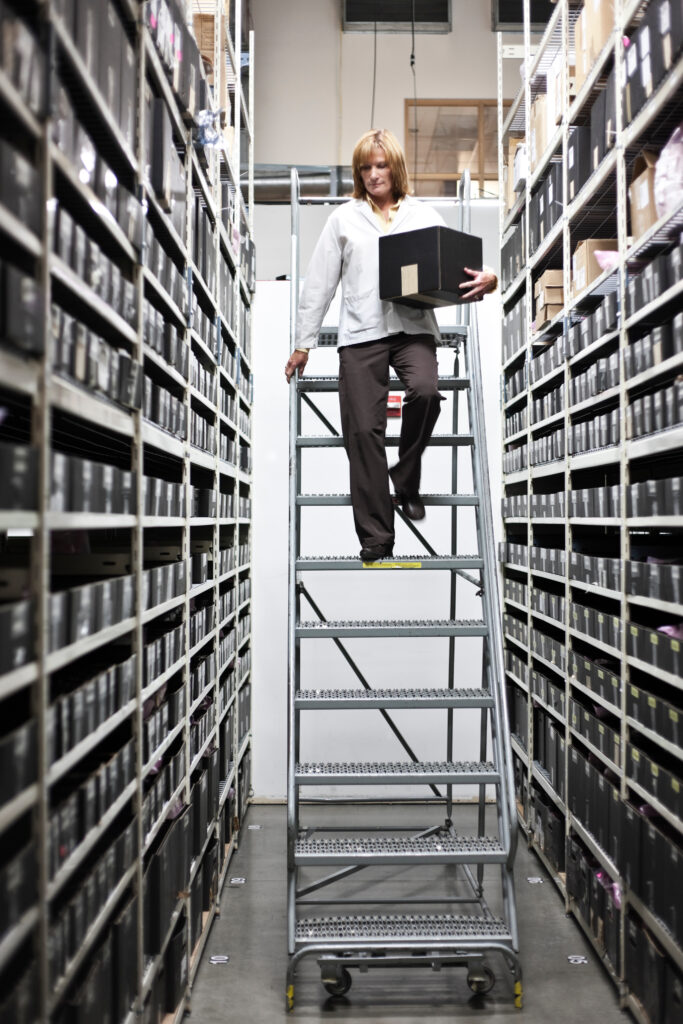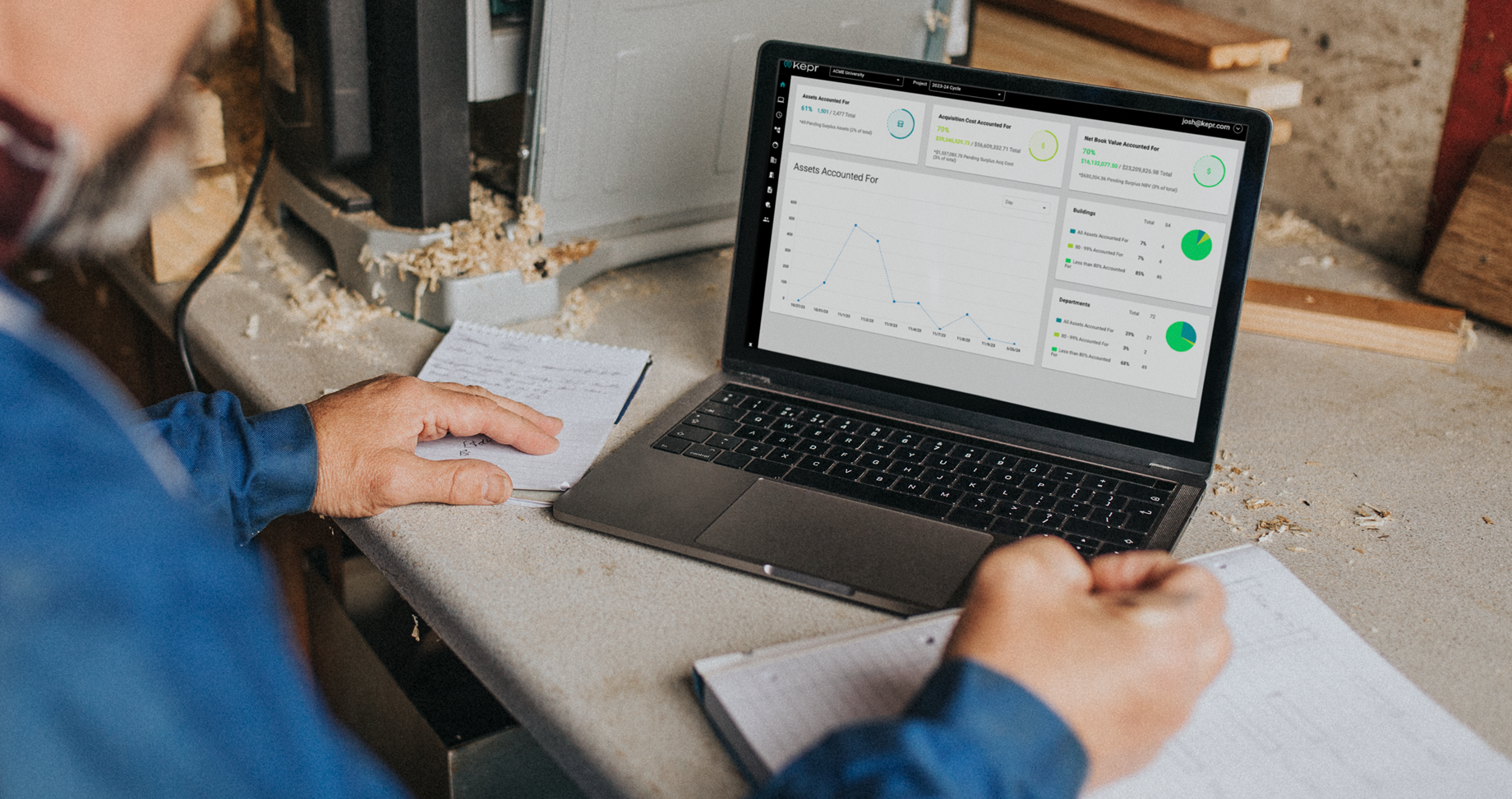

KEPR helps businesses move faster by eliminating manual asset tracking. Whether you’re overseeing equipment across sites or syncing critical data with finance systems, KEPR delivers clarity and control without slowing your team down or overcomplicating your tech stack.
Fast-growing businesses need visibility into their assets across departments, locations, and systems. KEPR simplifies it all with RFID-ready tools, mobile access, and ERP integration so you can scale with confidence and keep your data clean.
1M+
Assets
Verified
10+
Years
In use


KEPR gives operations and finance leaders the tools they need to modernize asset tracking, without slowing down what’s already working.
For most institutions, the goal of capital asset tracking is clear: know what you have, where it is and its value. But when tracking processes break down, the consequences go far beyond missing improperly valued equipment.
Untracked, duplicated, or misreported assets expose schools, governments, and health systems to compliance risk, audit findings, and wasted capital. The cost of these gaps is often hidden until it’s too late.
At KEPR, we work with organizations every day who are trying to shift from reactive asset tracking to proactive asset lifecycle management. The gap between these two approaches has big costs that you need to understand.
The cost of poor asset tracking adds up. A NACUBO study found that 61% of higher education finance leaders cited poor asset visibility as a material risk to internal controls and audits. The same study found that 35% of universities reported at least one audit finding in the past three years related to gaps in their fixed asset inventory system.
These aren’t outliers. They reflect a pattern of institutions trying to manage thousands of capital assets with spreadsheets, disconnected systems, or software that isn’t designed for the task.
The immediate risk of poor tracking is audit exposure. But the secondary effects are just as damaging. Without reliable asset data, institutions are susceptible to these risks:
It’s not just a finance problem. It affects everyone who touches capital equipment across the organization.In most institutions, capital assets span dozens of departments—each with its own people, priorities, and systems. That’s where the real breakdown happens.
One department might maintain a list of microscopes. Another might track lab equipment in a spreadsheet. Facilities may keep capital equipment records on a shared drive. The finance team has to reconcile all of it during year-end reporting.
Without a single system to bring this data together, the gaps start to widen. And when it’s time for an audit, reconciling these systems becomes a fire drill.

KEPR was built to eliminate the disconnect and address these hidden costs head on. Our innovative asset tracking software gives teams one place to track, verify, and report on assets across the entire organization. Whether it’s a barcode tag, RFID, or a real-time location beacon, KEPR brings every asset into view.
Because KEPR is browser-based, teams can conduct inventories using any mobile device. No apps to install. No special scanners to configure. Field staff, finance, and facilities can all work from the same system and keep an up-to-date record of all assets as they go.
This result is fewer missed items, cleaner audit trails, and real-time visibility that actually matches what’s on the ground.
The longer institutions delay modernization, the more they spend cleaning up preventable problems. Missed depreciation, compliance violations, lost equipment, and duplicate spending all chip away at budgets and trust.
Fixing it doesn’t have to be hard. It’s about giving your teams the tools to work better, together. With KEPR, your institution can start small with one department, or one inventory cycle that brings benefits immediately before scaling it across your entire operation.
Preview KEPR now by watching our 3-minute demo overview video.
Asset tracking has come a long way from clipboards and one-time-a-year walkthroughs. As demands around inventory accuracy, audit readiness, and real-time reporting increase, so does the need for more modern, flexible tagging methods.
At KEPR, we work with higher education, healthcare, and public sector companies who manage thousands of capital assets across multiple buildings or campuses. No two inventories look the same. That’s why we support the most widely used and proven tagging methods in the field today: barcodes, QR codes, and RFID.
Let’s take a closer look at how they work, when they work best, and how KEPR brings them all together.
Barcodes and QR codes are still the most commonly used method for tagging physical assets. These are printed labels that store a unique identifier and can be scanned using a mobile device or handheld scanner.
In KEPR, barcodes and QR codes are fully supported through any mobile browser, without the need for a dedicated mobile app. Teams can log in, scan assets on the spot, take a picture and instantly update location, custodian or status. That makes this method ideal for day-to-day updates and departmental-level verification.
Why organizations choose barcodes and QR codes:
Where they fall short:

RFID (Radio Frequency Identification) takes asset tracking to the next level. Unlike barcodes, RFID tags don’t need to be visible to be read. They use radio waves to communicate with a scanner, allowing you to capture hundreds of items in seconds, even if they’re inside boxes, cabinets, or bins.
RFID is especially helpful in environments where time, precision, and compliance are top priorities. It’s also ideal for large-volume asset counts or situations where assets are shared between departments.
KEPR is fully compatible with RFID-based tracking. Tags can be scanned using our iOS mobile app or compatible mobile readers that sync directly with our platform. As assets are scanned, KEPR updates the record in real time and maintains an audit trail.
Why organizations choose RFID:
Where RFID may be a stretch:
KEPR was built to meet the needs of your institution’s asset tracking strategy, regardless of your tagging approach. Whether you’re applying barcodes, experimenting with RFID, or using a combination across departments, KEPR supports it all in a single, browser-first platform.
We don’t believe in pushing a one-size-fits-all method with our software. Some departments need fast scanning. Others need simple workflows for non-technical users. With KEPR, you can assign the right tagging method for the right asset and keep everything aligned in one system.
There’s no app to install and no jumping between systems. KEPR gives you a single source of truth that works for every team involved in asset tracking, including IT, Facilities, Finance and each participating department.
Ready to explore real-time asset tracking? Let’s talk about how KEPR makes it simple.
For public sector organizations like Dekalb County, Georgia, maintaining an accurate inventory of capital assets is essential. With internal controls under constant scrutiny and external auditors demanding detailed documentation, the ability to confidently track and verify capital assets is a requirement for both financial reporting and operational integrity.
That’s where asset tracking technology like KEPR comes in to simplify how organizations conduct physical inventories. Service provider partners, like HCA Asset Management, integrate KEPR into their daily workflows to bring accuracy, speed, and structure to asset audits and reconciliations.
HCA did exactly that with Dekalb County, embedding KEPR into their process from start to finish when conducting a full inventory and valuation of its capital assets. The goal was clear: support audit compliance, strengthen risk management practices, and bring transparency to assets that support county operations.
Dekalb County isn’t unique in its challenges. Like many local governments, the county operates a range of departments, each with its own procedures, personnel, and physical footprint. Without a centralized, modern system for asset inventory, these environments tend to rely on spreadsheets, shared drives, or legacy software that isn’t built for mobility or multi-user collaboration.
The result? Inventories become reactive, difficult to verify, and have a risk of failing to meet the standards expected during external audits.
With KEPR, HCA was able to work side by side with Dekalb County personnel using a shared cloud-based platform that tracked each asset in real time. KEPR allowed field teams to scan asset tags using any mobile device directly through a secure browser, eliminating the need for app downloads or additional training. Locations, photos, and notes are all captured in one place, instantly available for cross-checking and reporting.
What makes KEPR especially valuable in government settings is its ease of access. KEPR is designed to remove friction at every step of asset tracking. HCA’s team didn’t have to onboard a new tool or install software across multiple devices. With KEPR, they could log in from the field or office and immediately start verifying assets. The county staff also had real-time access to audit trails and reconciliation data as HCA progressed through each location.
This speed and clarity was especially important for fixed asset categories like infrastructure, specialized equipment, and departmental furnishings. Every asset needed to be physically verified, matched to existing records, and documented for value and useful life.

KEPR isn’t just about scanning barcodes or updating lists. It’s about aligning data, location, and accountability across departments. With KEPR, Dekalb County now has a structured way to ensure capital assets are traceable and audit-ready.
The browser-first design means inventory work can happen anywhere, with no risk of version conflicts or outdated spreadsheets. For HCA, KEPR is part of a larger toolkit they rely on to deliver results for clients across government, higher education, and health care. The platform gives them confidence that every inventory is complete, accurate, and defensible.
With centralized visibility, consistent documentation, and a repeatable process, the county now has a more sustainable approach to inventory management. For partners like HCA, KEPR ensures every inventory project they lead is backed by technology that was built intentionally to work in the field with central visibility to controller and property control personnel.
As expectations for digital readiness increase for government entities, tools like KEPR become essential infrastructure as part of long-term financial stewardship.
Want to see how KEPR could support your capital asset program? Watch our 3-minute preview or request a demo.
© 2025 KEPR. All Rights Reserved